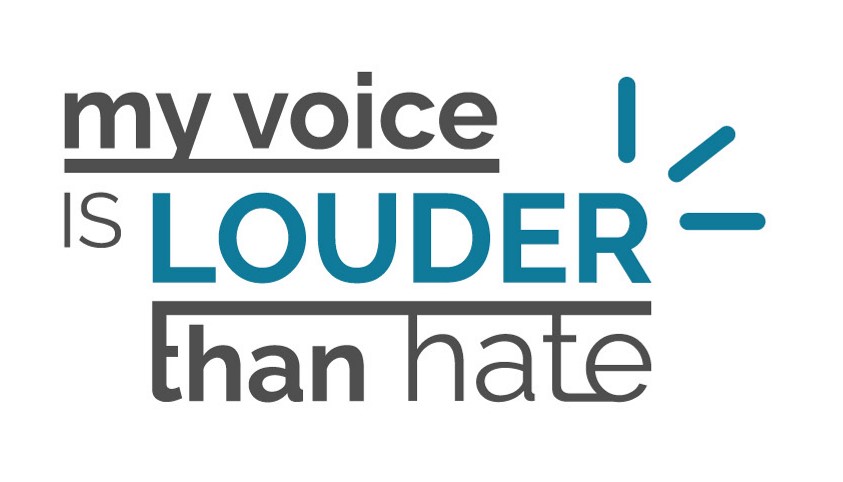My Voice is Louder Than Hate
 My Voice is Louder Than Hate is a multimedia lesson resource designed to empower students in Grades 9 to 12 to push back against hate and prejudice in their online communities. Over the course of this program, students will: learn how to push back when they encounter hate or prejudice online; develop digital and media literacy skills to recognize and confront hate material online; and, prepare to take action as digital citizens by taking an active role in forming the norms and values of their offline communities and using digital and media tools for civic action online and offline.
My Voice is Louder Than Hate is a multimedia lesson resource designed to empower students in Grades 9 to 12 to push back against hate and prejudice in their online communities. Over the course of this program, students will: learn how to push back when they encounter hate or prejudice online; develop digital and media literacy skills to recognize and confront hate material online; and, prepare to take action as digital citizens by taking an active role in forming the norms and values of their offline communities and using digital and media tools for civic action online and offline.
This program consists of four elements: an online multimedia platform that includes learning resources, practice scenarios and tools for media-making; two lessons that use the different features of the multimedia platform to educate and empower students to respond to hate and prejudice online; a training workshop to prepare teachers to deliver these lessons; and a teacher’s guide, which provides teachers with background information and resources to use in implementing the program.
Teacher Training Workshop
The self-directed workshop helps to prepare teachers to deliver the My Voice is Louder Than Hate lessons and deal with any difficult conversations that may take place as a result.
Teacher’s Guide
The teacher’s guide provides an expanded discussion of topics such as online hate, casual prejudice, dehumanization and digital citizenship and detailed instructions on how to present the My Voice is Louder Than Hate lessons in a way that will be emotionally safe for students.
Lesson Series
My Voice is Louder Than Hate Online Multimedia Platform
The My Voice is Louder Than Hate online multimedia tool consists of five elements:
- The hub introduces the tool and provides links to the other four areas.
- The experiences section lets students watch videos about experiencing and pushing back against online prejudice.
- The learning spoke provides students with interactive multimedia tip sheets that provide key information on different aspects of dealing with online prejudice.
- The story spoke lets students play through a series of short scenarios where they witness casual prejudice and hate speech in a variety of contexts.
- The sharing spoke gives students the chance to respond to prejudice and share their own experiences with two media-making tools, a digital storytelling tool that lets students combine images, text, music and narration to make digital stories, and a meme maker tool that lets students make image macro memes that they can use to respond to prejudice in a light-hearted way.
My Voice is Louder Than Hate: The Impact of Hate
In this lesson, students explore how interacting through digital media can make it easier to hurt someone’s feelings and can make hurtful or prejudiced behaviour seem normal in online spaces. They learn how Canadian youth feel about and respond to casual prejudice online and then use the My Voice is Louder Than Hate tool to create a digital story that will help people understand that online hate hurts everyone who witnesses it.
My Voice is Louder Than Hate: Pushing Back Against Hate
In this lesson, students explore the benefits and drawbacks of being “full citizens” online. They learn reasons why Canadian youth sometimes do not push back when they witness casual prejudice online and then use the My Voice is Louder Than Hate tool to practice different ways of responding. Finally, students analyze memes as a medium and a way of responding to hate or other hurtful behaviour online and then use the My Voice is Louder Than Hate tool to create a meme that they can use to push back against causal prejudice.
The My Voice is Louder Than Hate program was made possible with financial contributions from Public Safety Canada’s Community Resilience Fund.
